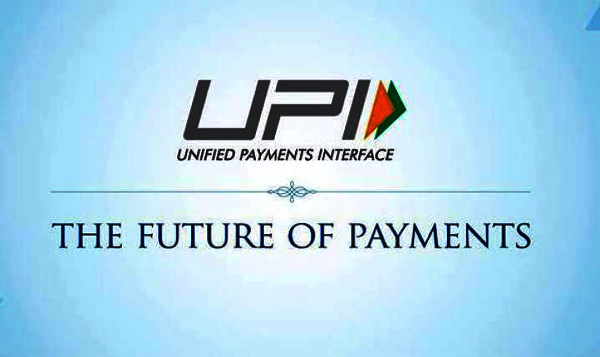Last week, social media and mainstream media was flooded with applause for India’s UPI (unified payment interface) after reports emerged that global tech giant Google has sent a letter (dated November 9, 2019) to the Federal Reserve asking it to take inspiration from India while trying to develop FedNow, an interbank real-time gross settlement (RTGS) service announced in August this year. IBS Intelligence then had written that Federal Reserve might be taking a cue from UPI to create the real-time payments system.
Growth of UPI
For the uninitiated, UPI is an instant real-time payment interface developed in 2016 by the National Payments Corporation of India, an Indian government-backed entity. Regulated by the country’s banking regulator Reserve Bank of India, the interface works by instantly transferring funds between two bank accounts on a mobile platform through an email-like id, for example, xyz@icici. While it started as person to person (P2P) payments, the facility is now available for making payments to merchants and small businesses.
In just three years, the value of UPI-based transactions in India has grown by almost a whopping 200 times at INR 12.8 trillion (till November 2019) as compared to a mere INR 69 billion in the financial year 2016. While a demonetization exercise by the Narendra Modi government in November 2016 has played an essential role in the growth of UPI. Besides, the Indian FinTech ecosystem also has a significant role to play in making UPI the fastest growing payments interface not only in India but also globally. UPI currently has over 100 million users and has crossed the landmark one billion in the number of transactions in just three years. To put things into perspective, the world’s leading payments company PayPal took about two decades to reach 200 million active users.
“UPI /IMPS can be easily termed as India’s global level innovation wherein money can be transferred from one bank account through a mobile phone almost in real-time. Also, the number of parties involved could be up to six, and even with that many numbers of stakeholders, amount transfer is done in real-time and reflects in the receiver’s bank account in real-time,” said Naveen Surya, former chairman of Payments Council of India. He is the current chairman of FinTech Convergence Council, an industry body representing emerging financial technology players in the country.
Mandar Agashe, Founder of Sarvatra Technologies, an end-to-end solution provider offering Micro ATM and UPI-based Branch Servicing solutions among others, said, “Not only UPI is the first-ever innovative product emerging out of the country, but it has the power to replicate across several other developing countries where the card system is still not evolved. It can create a new paradigm shift in the payments systems in those countries. Besides, it still uses the 2Factor authentication system making the transactions safe and secure.”
Agashe further added that UPI is “truly a Made-In-India product with a global appeal” that made the technology behemoth Google not only take note of it but also create a product (Google Pay) based on UPI. Google Pay launched UPI-based payments in India in January 2018 and has already garnered the lion’s share in digital payments space in the country.
Global expansion
Experts feel that the UPI’s creator NPCI was backed by the government but had the independence to think innovatively to create a “world-class” product that both banks and standalone FinTechs can use. “The beauty of UPI is that it wasn’t promoted, but growth was solely customer-led. India now doesn’t need to say we have created a product like XYZ, but time has come for others to say that they have created a UPI-like product,” Agashe added. Bank of International Settlement (BIS) in a recently released paper has mentioned the need and importance of UPI, adding that the model is now being internationally watched, and can become an international model to facilitate quick and seamless payment.
Meanwhile, UPI’s creator National Payments Corporation of India (NPCI), is mulling plans to set up a subsidiary to take the UPI model to other countries. It may soon go live in overseas markets like the United Arab Emirates (UAE) and Singapore.
“NPCI has decided to set up a subsidiary to focus on taking the UPI model to other countries and make this business propositions in those countries and for the NPCI itself,” RBI governor Shaktikanta Das said at Times Network’s India Economic Conclave this month.
UPI 3.0
While the global plans are firming up, NPCI is also working towards the launch of UPI 3.0, intending to capture the next billion users. The corporation is all set to issue a onetime mandate to make recurring payments for periodic services rendered from merchants, for example, automatic payments of monthly bills and subscription-based services. Talking at a recent FinTech summit, Praveena Rai, COO of NPCI, indicated that the next set of used cases of UPI would be coming from the corporate sector, IPO, payments-on-delivery, school fees, and cashless insurance among several others.
Source: IBSIntellience
You may also like
-
Trade Connect E-platform For Exports Is Single Window, Fast, Accessible And Transformational: Shri Piyush Goyal
-
Dot Simplifies Approval Processes For Telecom Licenses And Wireless Equipment
-
Coal Production and Supply Trends on Positive Trajectory
-
Union Minister To Release Booklets On Promotion Of Indigenous Species & Conservation Of States Fishes
-
2nd India-Japan Finance Dialogue held in Tokyo on 6th September, 2024
